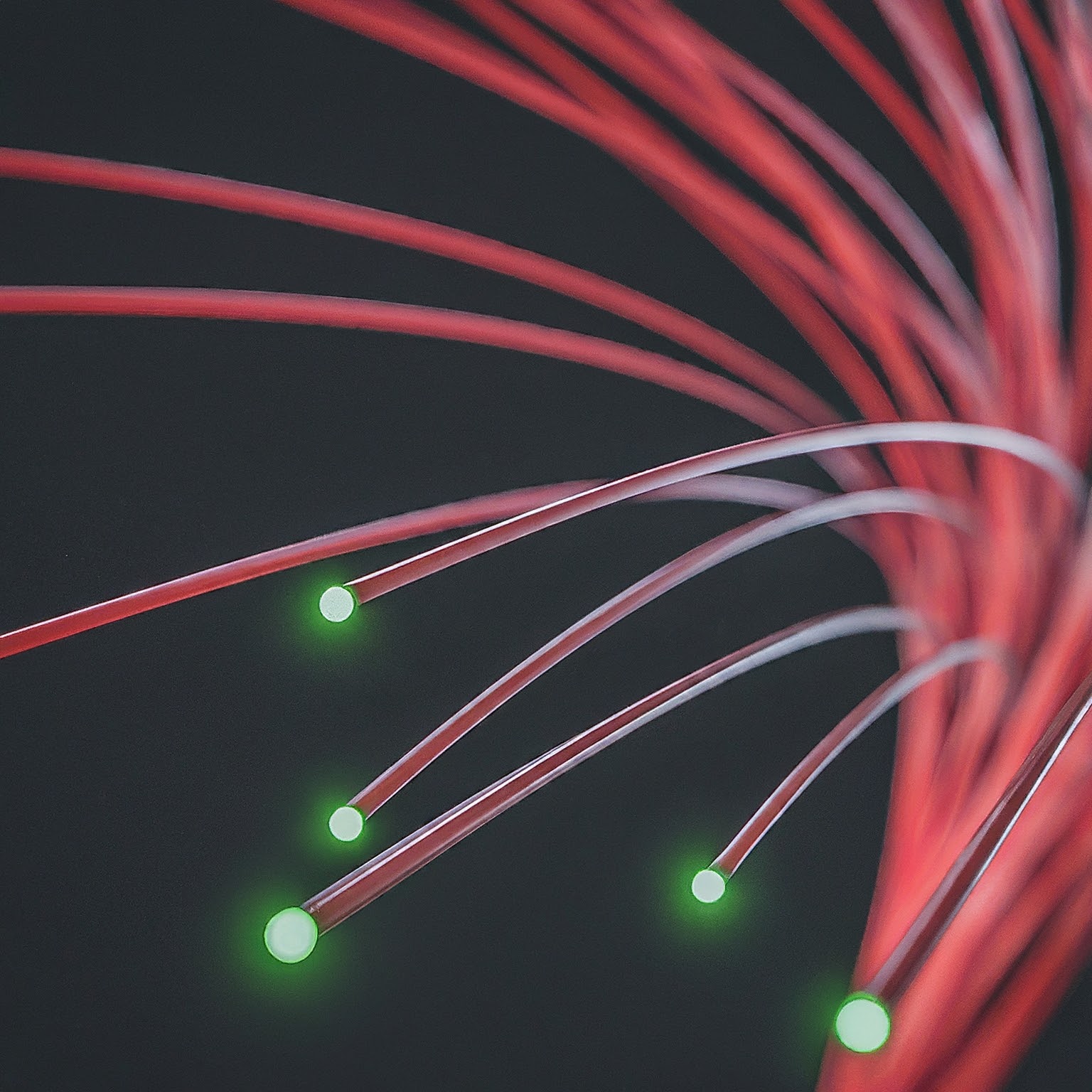In the realm of telecommunications, few technologies have had as profound an impact as internet fiber optics. This revolutionary medium has transformed the way we connect, communicate, and access information, ushering in an era of unprecedented speed, bandwidth, and reliability. As the demand for high-speed internet continues to surge, driven by data-intensive applications like streaming, gaming, and cloud computing, internet fiber optics stands poised to become the backbone of the digital age.
This exclusive article embarks on an in-depth exploration of internet fiber optics, unraveling its underlying technology, advantages, applications, challenges, and the pivotal role it plays in shaping the future of connectivity.

Understanding Internet Fiber Optics
At its core, internet fiber optics involves the transmission of data as pulses of light through thin strands of glass or plastic fibers. These fibers, often no thicker than a human hair, can carry massive amounts of information over vast distances at the speed of light, leaving traditional copper-based internet connections in the dust.
The magic behind internet fiber optics lies in its ability to harness the properties of light for data transmission. Let’s delve deeper into the technological marvels that make this possible.
The Technology Behind the Speed
The exceptional speed and bandwidth capabilities of internet fiber optics can be attributed to several key factors:
- Low Attenuation: Unlike electrical signals in copper wires, light signals traveling through optical fibers experience minimal loss of intensity over long distances. This enables data transmission over extended ranges without the need for signal boosters, ensuring a consistent and reliable connection.
- High Bandwidth: Optical fibers can carry multiple wavelengths of light simultaneously, each carrying a separate data stream. This multiplexing capability dramatically increases the bandwidth, or the amount of data that can be transmitted per unit of time.
- Immunity to Electromagnetic Interference: Optical fibers are immune to electromagnetic interference, which can plague traditional copper cables. This immunity ensures a stable and noise-free connection, even in environments with high levels of electrical activity.
- Security: Data transmitted through optical fibers is inherently more secure than data transmitted through copper cables. It’s significantly more difficult to tap into a fiber optic cable without detection, making it a preferred choice for applications requiring high levels of security.
Advantages of Internet Fiber Optics
The advantages of internet fiber optics extend far beyond its superior speed and bandwidth. Let’s explore some of the key benefits it offers:
- Blazing-fast speeds: Fiber internet delivers significantly faster download and upload speeds compared to traditional broadband technologies. This translates to seamless streaming of high-definition videos, rapid file downloads, and lag-free online gaming experiences.
- Symmetrical speeds: Unlike many traditional connections that offer faster download speeds than upload speeds, internet fiber optics often provides symmetrical speeds, meaning you can upload data just as quickly as you download it. This is particularly beneficial for activities like video conferencing, cloud storage, and large file transfers.
- Low latency: Fiber internet boasts incredibly low latency, resulting in a more responsive connection. This is crucial for real-time applications like online gaming, video calls, and virtual reality experiences, where even slight delays can be detrimental.
- Reliability: Fiber optic cables are less susceptible to damage and interference from weather conditions or electromagnetic fields, ensuring a more reliable and stable connection.
- Scalability: Fiber optic networks are highly scalable, capable of accommodating future bandwidth demands as technology continues to evolve.
- Future-proof: With its vast bandwidth potential, internet fiber optics is well-equipped to handle the increasing demands of emerging technologies and applications, ensuring your connection remains relevant and capable for years to come.
Applications of Internet Fiber Optics
The superior speed, bandwidth, and reliability of internet fiber optics make it an ideal solution for a wide array of applications across various sectors.
- Residential Use: Fiber internet transforms the home internet experience, empowering users to stream 4K videos, engage in online gaming, and connect multiple devices simultaneously without any lag or buffering.
- Business Use: For businesses, fiber internet is a game-changer, enabling seamless cloud computing, video conferencing, and data transfer, boosting productivity and efficiency.
- Healthcare: In the healthcare sector, fiber internet supports telemedicine, remote patient monitoring, and the transmission of large medical images and data, improving access to care and enabling more efficient healthcare delivery.
- Education: Fiber internet revolutionizes education by facilitating online learning, distance education, and access to vast educational resources, empowering students and educators alike.
- Smart Cities: Fiber optic networks form the backbone of smart city infrastructure, supporting applications like traffic management, public safety, and environmental monitoring, contributing to more efficient and sustainable urban environments.
Challenges and the Road Ahead
While internet fiber optics offers numerous advantages, its widespread adoption faces certain challenges:
- Cost: Deploying fiber optic infrastructure is a capital-intensive endeavor, particularly in rural or underserved areas. This can lead to higher installation costs and monthly fees for consumers.
- Availability: Although fiber internet coverage is expanding rapidly, it’s not yet universally available. Many areas, especially in rural communities, still rely on older technologies like DSL or cable internet.
- Installation: Installing fiber optic cables can be complex and time-consuming, requiring specialized equipment and expertise.
However, despite these challenges, the future of internet fiber optics is promising. Governments and ISPs are investing heavily in expanding fiber networks to bridge the digital divide and ensure equitable access to high-speed internet.
Moreover, ongoing advancements in fiber optic technology are pushing the boundaries of speed and capacity, with multi-gigabit connections becoming increasingly feasible. The future holds exciting possibilities for new and innovative applications that will leverage the full potential of internet fiber optics.

Conclusion
Internet fiber optics has emerged as a transformative force in the world of connectivity, offering unparalleled speed, bandwidth, and reliability. As our reliance on the internet continues to grow, fiber is poised to become the de facto standard for broadband access, empowering individuals, businesses, and communities to connect, communicate, and thrive in the digital age.
لا تعليق